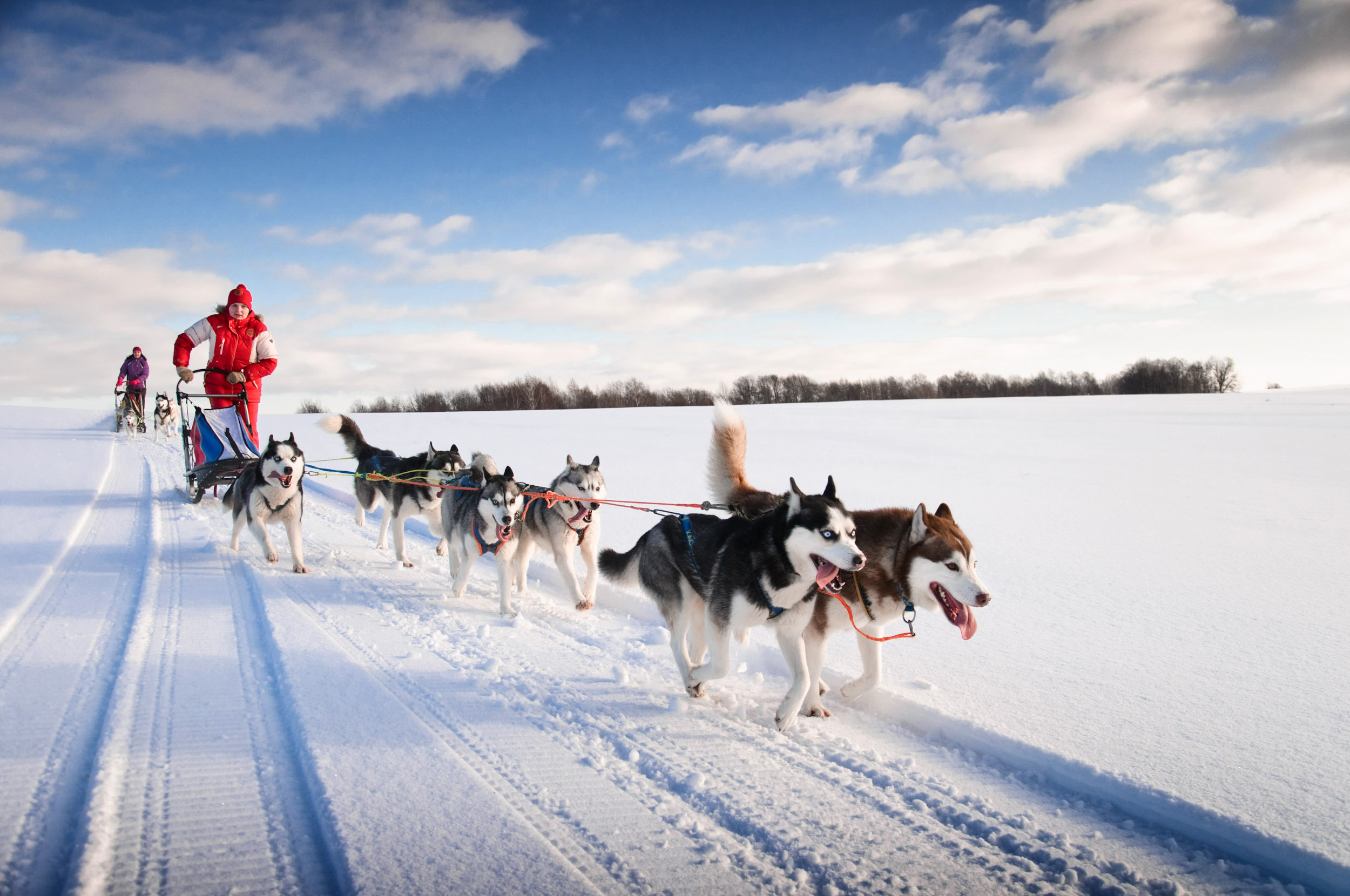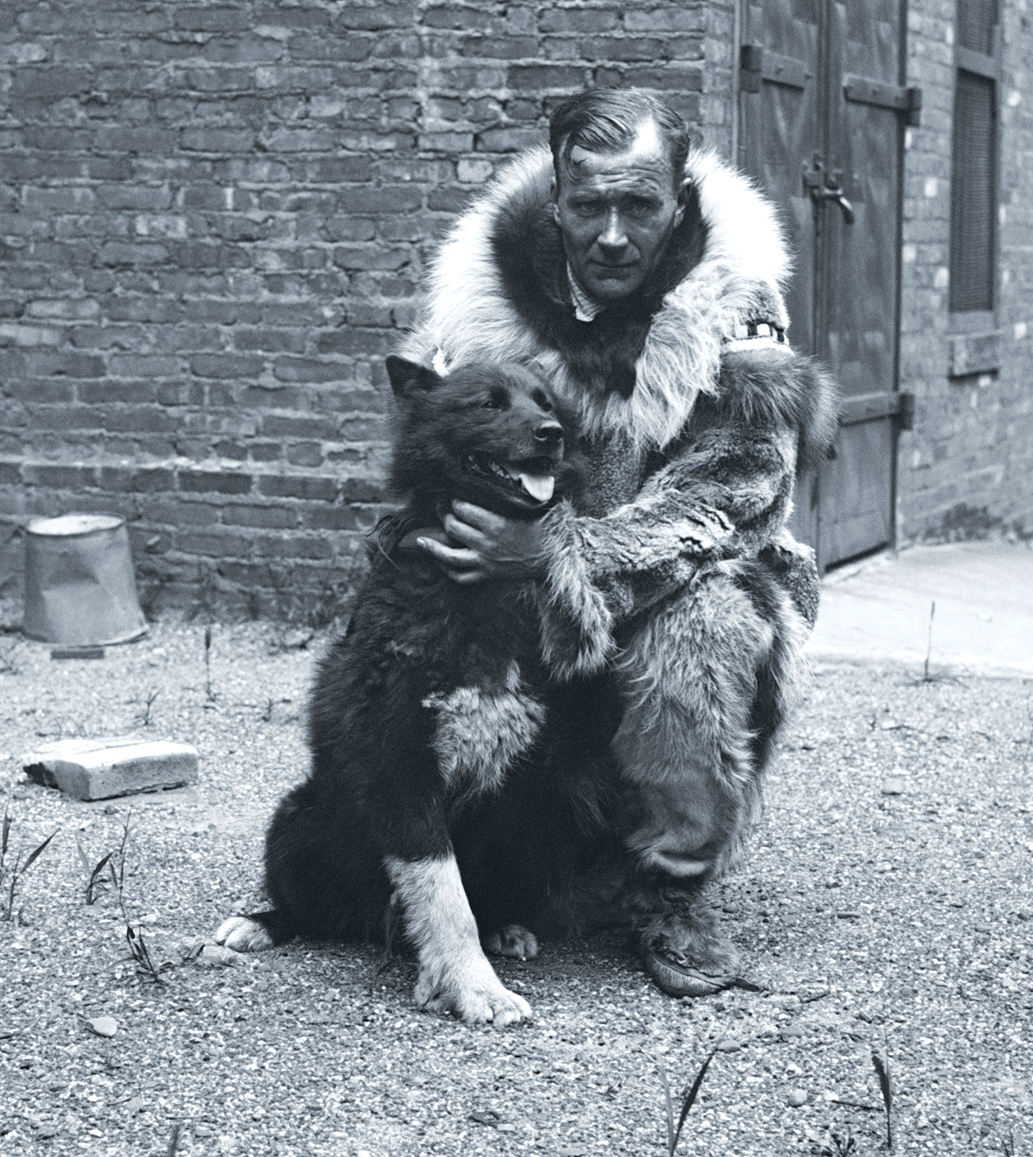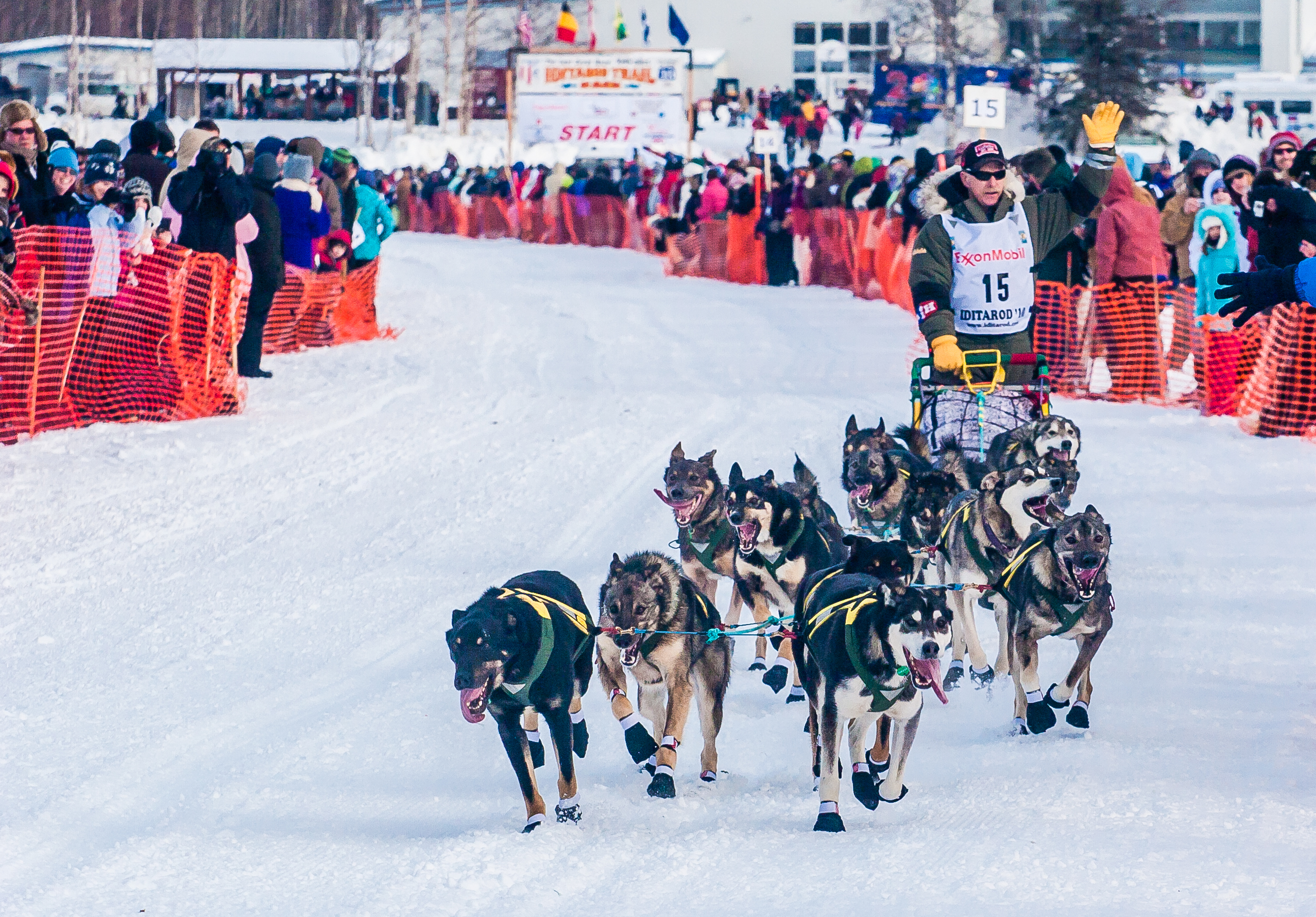Sled dog is a dog used to pull sleds across snow and ice in northern regions. Many purebred dogs—such as the Siberian husky, the Alaskan malamute, and the Samoyed—serve as sled dogs. But crossbred dogs are also widely used, particularly in the United States and Canada. Sled dogs have long been used as work animals. Today, sled dog racing is a popular sport.

A typical sled dog stands about 2 feet (60 centimeters) high at the shoulder and weighs 40 to 80 pounds (17 to 35 kilograms). It has small pointed ears. A sled dog has a protective outer coat of fur, as well as an undercoat that is often shed in the summer. The undercoat allows these dogs to sleep outside in the snow at temperatures as low as –70 °F (–57 °C).
Loading the player...Siberian Husky sled dogs
For more than 1,000 years, native peoples of the Far North have depended on sled dogs for protection, hunting, transportation, and companionship. In the early 1900’s, sled dogs helped explorers reach the North Pole and the South Pole. The Royal Canadian Mounted Police patrolled the frontier with sled dog teams from 1873 to 1969. For many years, sled dog teams delivered mail to distant settlements in Alaska and Canada.
The first organized sled dog race took place in 1908 in Nome, Alaska. Today, sled dog races are held in more than 20 countries. In Nome-style racing, the dogs in each team are hitched in groups of two side by side, sometimes with a single lead dog. The musher (team driver) stands on long runners at the rear of a flexible, wooden sled, often “pedaling” with one foot as if on a skateboard. The musher also may run along at the rear, keeping a firm grip on the sled’s handle bar.

In most speed races, the number of dogs on a team is limited to from 3 to 10. A well-trained team averages about 20 miles (30 kilometers) per hour. In long-distance races, teams consist of 10 to 20 dogs. These races cover from 500 to 1,170 miles (800 to 1,900 kilometers). They may take from one to two weeks to complete and involve overnight camping. The sleds must carry from 300 to 600 pounds (135 to 270 kilograms) of food and equipment.
In Europe, Scandinavian-style racing is popular. Teams consist of one to three dogs hitched single file with the musher at the rear on skis. The dogs pull weights in either a small sled or a plastic toboggan called a pulka. This style is also called pulka-style racing.

